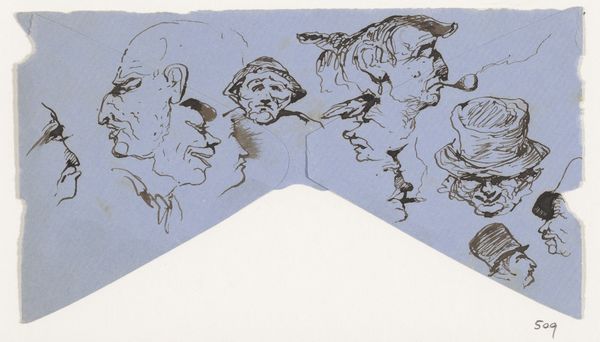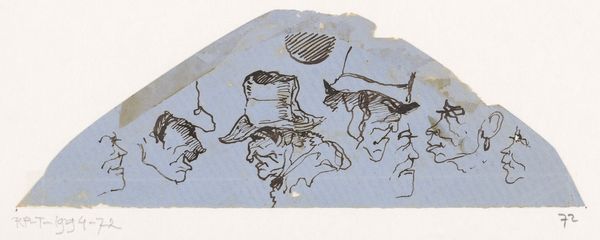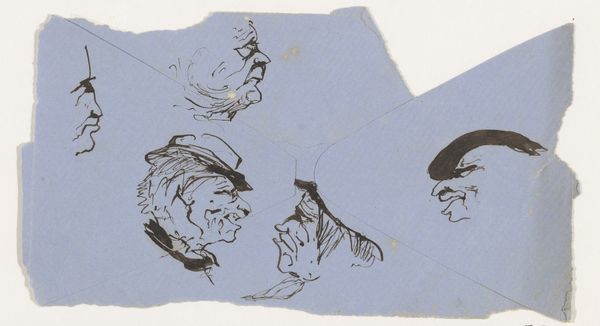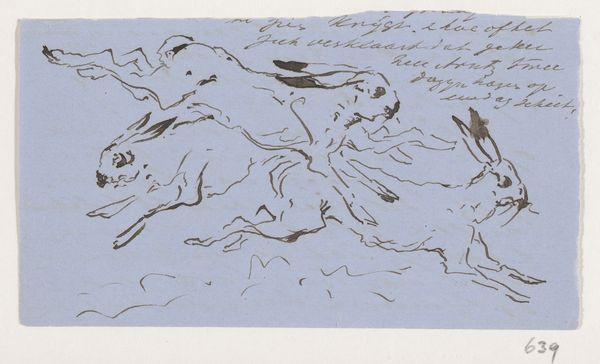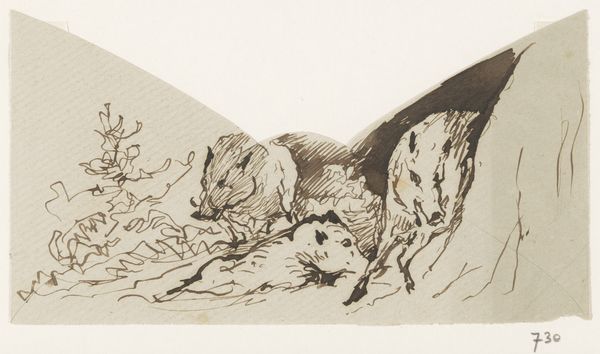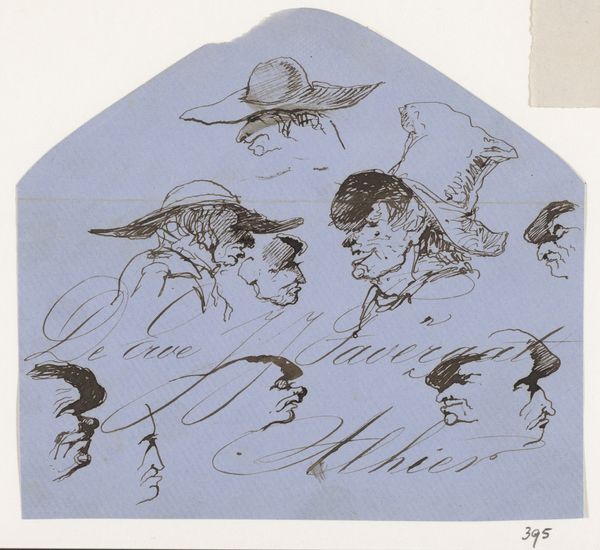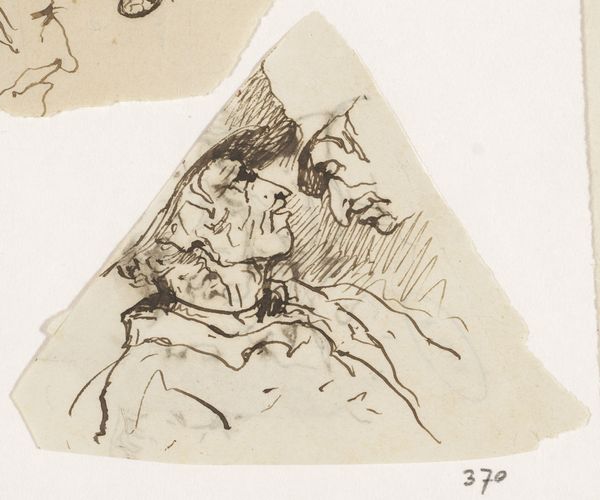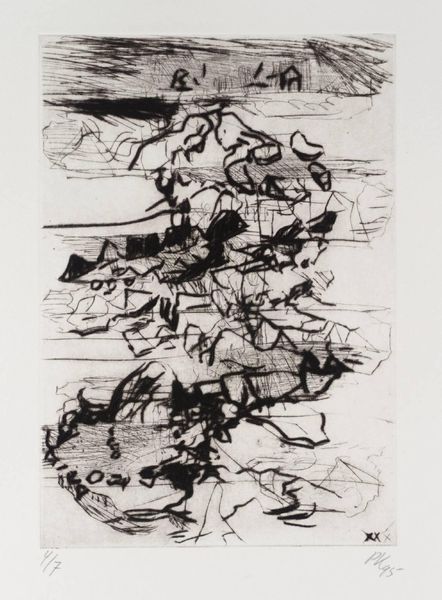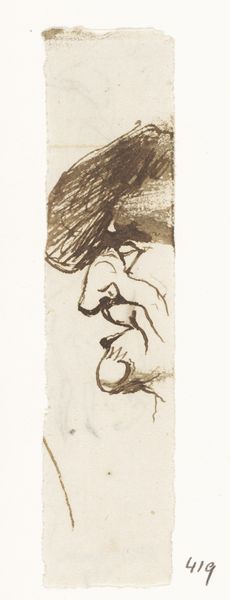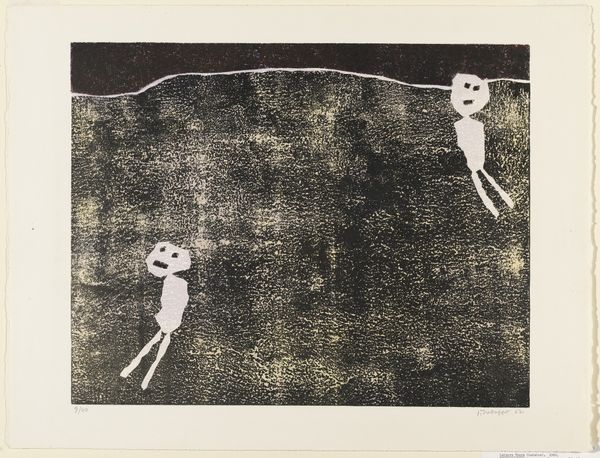
Drie manskoppen, een rennende haas en een landschapskrabbel 1819 - 1881
0:00
0:00
drawing, paper, ink
#
portrait
#
drawing
#
amateur sketch
#
imaginative character sketch
#
quirky sketch
#
incomplete sketchy
#
paper
#
personal sketchbook
#
ink
#
ink drawing experimentation
#
romanticism
#
sketchbook drawing
#
watercolour illustration
#
genre-painting
#
sketchbook art
#
fantasy sketch
Dimensions: height 144 mm, width 175 mm
Copyright: Rijks Museum: Open Domain
Curator: Alright, let’s dive into this intriguing piece. What do you make of it? Editor: Well, initially, it feels like glimpsing someone’s private musings – almost like discovering a page torn from a forgotten journal, evoking a mood that's both whimsical and slightly melancholic. Curator: Precisely. This is "Drie manskoppen, een rennende haas en een landschapskrabbel," or "Three Male Heads, a Running Hare and a Landscape Sketch" by Johannes Tavenraat. It’s dated somewhere between 1819 and 1881 and currently resides here at the Rijksmuseum. You see these clustered studies rendered with ink on paper. Editor: I'm really drawn to the contrast. Those intensely detailed character studies juxtaposed against the fleeting, almost ethereal landscape above. And then, that little hare bolting across the page, brimming with frantic energy! How was this kind of sketchbook page generally consumed? Curator: In its time, such a study likely circulated within an intimate circle of fellow artists or perhaps remained solely for the artist's own reflection and development. It allows for a candid glimpse into the artistic process, devoid of the pressures of public expectation. Editor: You can really feel the artist experimenting, not just depicting but actually thinking on the page. Was Tavenraat affiliated with any particular artistic circles that informed his drawing practice? Curator: Tavenraat's practice aligns broadly with the Romanticism then in vogue, embracing emotional intensity and celebrating individuality, though he maintains a deeply personal visual language that does not align completely with standard visual languages from this era. This ink drawing represents both the artist’s unique explorations of Romanticism, and also offers the opportunity to consider how sketchbooks were developing both as tools and artifacts. Editor: It’s remarkable how something so seemingly casual can hold so much depth, even now. You begin to ponder on art production more generally, who gets preserved by the institutions and which work by these figures. Thanks! Curator: Absolutely. These glimpses into private creation allow us to re-evaluate these histories in their current museum context. A nice provocation for visitors as well.
Comments
No comments
Be the first to comment and join the conversation on the ultimate creative platform.

